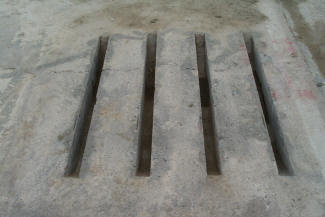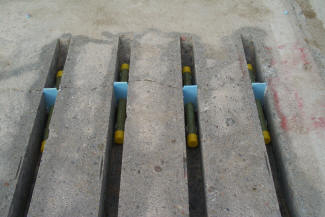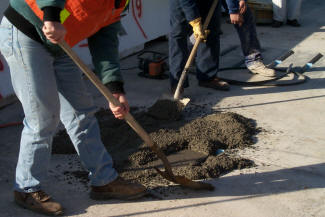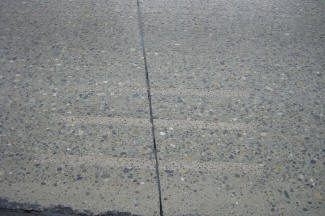Dowel bar retrofitting is a method used to restore or provide better load transfer across transverse joints or cracks using dowel bars. Usually, dowel bar retrofits are necessitated by excessive faulting due to a loss of aggregate interlock over time. It is interesting to note that much of the rigid pavement built in the U.S. during the 1950s and later included dowel bars for load transfer – except on the west coast where dowel bars did not become common practice in some states until the late 1990s. Thus, large-scale dowel bar retrofit projects are largely confined to western states. The basic procedure is as follows:
- Cut slots across the joint (Figure 1). Typically, three or four slots are cut across the joint in each wheel path. These slots are cut parallel to the direction of traffic flow and must also be parallel to one another so that the retrofitted dowel bars do not restrict slab expansion and contraction.
- Insert dowel bars into the slots (Figure 2). Each dowel bar is placed on a small support to keep it at the correct elevation. A Styrofoam joint reformer and plastic end caps are used to allow the slab to expand without bearing on the grout.
- Fill the slot with grout (Figure 3). A small maximum aggregate size (e.g., 10 mm (0.4 inch)) is used to ensure the grout fills in completely around the dowel.
- Diamond grind the entire pavement area (Figure 4). This removes any elevation differences due to faulting or grout placement.
Retrofitting dowel bars has grown in popularity over the last 10 years and has resulted in good pavement performance.




